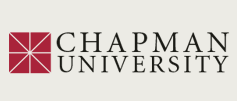-

Introduction to Richard Nixon and Europe : The Reshaping of the Postwar Atlantic World
Luke A. Nichter
The U.S.-European relationship remains the closest and most important alliance in the world. Since 1945, successive American presidents each put their own touches on transatlantic relations, but the literature has reached only into the presidency of Lyndon Johnson (1963-9). This first study of transatlantic relations during the era of Richard Nixon shows a complex, turbulent period during which the postwar period came to an end, and the modern era came to be on both sides of the Atlantic in terms of political, economic, and military relations.
-

The Nixon Administration and American Foreign Relations
Luke A. Nichter
Assessments of President Richard Nixon’s foreign policy continue to evolve as scholars tap new possibilities for research. Due to the long wait before national security records are declassified by the National Archives and made available to researchers and the public, only in recent decades has the excavation of the Nixon administration’s engagement with the world started to become well documented. As more records are released by the National Archives (including potentially 700 hours of Nixon’s secret White House tapes that remain closed), scholarly understanding of the Nixon presidency is likely to continue changing. Thus far, historians have pointed to four major legacies of Nixon’s foreign policy: tendencies to use American muscle abroad on a more realistic scale, to reorient the focus of American foreign policy to the Pacific, to reduce the chance that the Cold War could turn hot, and, inadvertently, to contribute to the later rise of Ronald Reagan and the Republican right wing—many of whom had been part of Nixon’s “silent majority.” While earlier works focused primarily on subjects like Vietnam, China, and the Soviet Union, the historiography today is much more diverse – now there is at least one work covering most major aspects of Nixon’s foreign policy.
Below you may find selected books and book chapters from faculty in the Presidential Studies Program in the Wilkinson College of Arts, Humanities, and Social Sciences.
Printing is not supported at the primary Gallery Thumbnail page. Please first navigate to a specific Image before printing.
